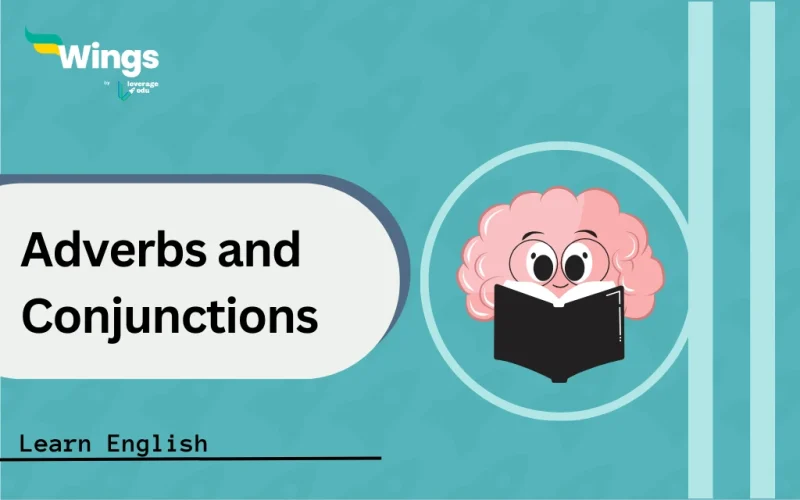Adverb and Conjunction: In the venture to learn English grammar, adverbs and conjunctions are two crucial components that play an important role in forming meaningful sentences. While both are parts of speech, they serve different meanings in sentences. In this blog post, we will take you through the difference between adverbs and conjunctions, and the meaning of adverbs and conjunctions with examples.
This Blog Includes:
Meaning of Adverbs
Adverbs work as a modifier for verbs, adjectives, and other adverbs, giving information about how, when, where and to what extended action is performed. Adverbs are known for their ability to enhance the meaning of sentences of time, place, manner, degree, or frequency.
Examples of Adverbs
Here are some examples of adverbs: How? When? Where? To what extent? or Why?
- He ran quickly (modifying the word ‘ran’)
- She spoke softly (modifying the verb ‘spoke’)
- She arrived late (modifying the verb ‘arrived’)
- He is very smart (modifying the adjective ‘smart’)
- She works too much (modifying the adjective ‘much’)
Also Read: Adverbs Definition
Meaning of Conjunction
Conjunctions are used to connect clauses, phrases, words, and sentences. Conjunctions join words, phrases, and sentences and form a relationship between them. There are three types of conjunctions which include coordinating conjunctions (e.g. and, but, or), subordinating conjunctions (because, although, while), correlative conjunctions (e.g. either…or, neither…or).
Examples of Conjunctions
Here are a few examples of conjunctions for your reference below:
- Coordinating conjunctions: She likes coffee and coffee.
- Subordinating Conjunction: He ate the pastry because it was delicious.
- Correlative Conjunction: She can either have cake or ice cream.
Difference between Adverb and Conjunction
Mentioning below the key difference between adverbs and conjunctions
| Particulars | Adverbs | Conjunction |
| Function | It provides additional knowledge about how, when, and where | They build a relationship within the sentence |
| Modification | The modification provides details about the action, state of being | They show the relation between the connected elements |
| Types | They are based on the type of information provided | They are classified based on their functions |
| Position in sentences | They are placed before and after the verb | They build a relationship between connected elements |
Also Read: Conjunction Adverbs

Adverb Vs Conjunction Practise Exercise (Download PDF)
In the following sentences, find out the adverbs and conjunctions.
- He quickly finished her homework before dinner.
- She went to bed early because she had an early dinner.
- She enjoyed the movie, yet she had a different opinion about the ending.
- After the rain stopped, the sun shone bright.
- Ria always studies focused before exams.
- He travelled to Dubai and explored many historical landmarks.
- Although it was snowing heavily, they decided to go for a walk.
- She works hard, but she rarely complains about it.
- Either he comes with us now, or you stay here alone.
- Amish sings beautifully whenever she performs on stage
- She decided to go for a run after finishing his work.
- We walked to the park because it was a beautiful day.
- She speaks Spanish fluently whenever he visits her grandparents
- He sings beautifully whenever he performs on stage.
Adverb Vs Conjunction Exercise Answers
- Adverb
- Conjunction
- Conjunction
- Conjunction
- Adverb
- Conjunction
- Conjunction
- Conjunction
- Adverb
- Conjunction
- Conjunction
- Conjunction
- Adverb
- Adverb
Related Reads
FAQs
Joining two independent clauses with a conjunction of adverbs creates a compound sentence. Examples: She washed her hands, therefore her hands are clean.
An adverb is a word that modifies (describes) a verb (she sings loudly), and an adjective (“very small”) is another adverb (“ended too quickly”)
Some of the Conjunctions adverbs are as follows: accordingly, furthermore, moreover, similarly, also.
This was all about the Adverb Conjunction examples, differences and usage in English grammar. Hope you understand the concept and know how to proceed. You can also follow Leverage Edu for more exciting and informative blogs.
 One app for all your study abroad needs
One app for all your study abroad needs















 60,000+ students trusted us with their dreams. Take the first step today!
60,000+ students trusted us with their dreams. Take the first step today!

